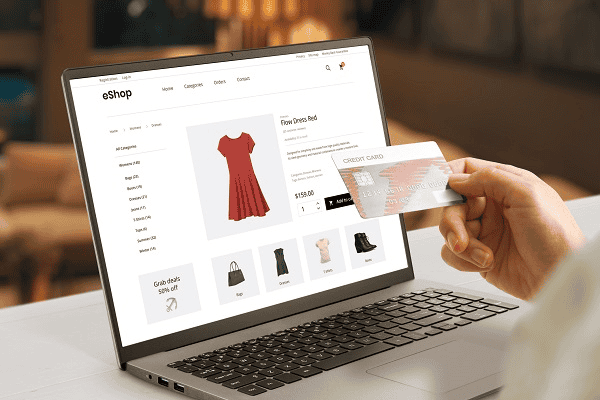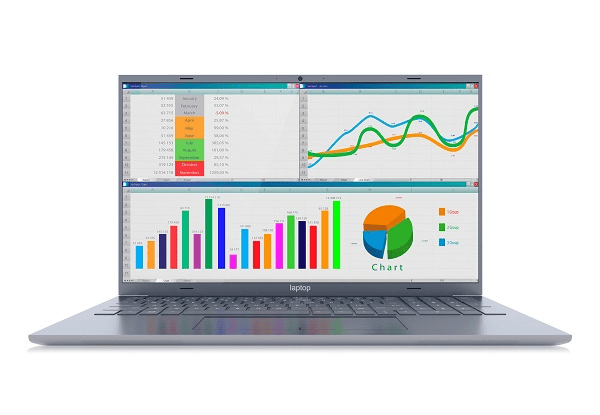E-Commerce in 2025: Definition, Benefits, Platforms & Examples

E-commerce has changed the way we shop, work and interact with each other. The industry has grown exponentially in recent years and has reshaped the global economy and retail as we know it. But what’s next for e-commerce? In this post we’ll cover the basics, benefits, challenges and the evolving landscape of digital commerce. Also, business models, security and trends. So let’s get into e-commerce and see what’s in store for us!
Quick Facts
E-commerce is an electronic transaction between buyer and seller facilitated by technology, with a focus on user experience.
It gives businesses more reach, cost savings and ability to try out different business models to target specific audiences.
There are 4 types of e-commerce models B2C (Business to Consumer), B2B (Business to Business), C2C (Consumer To Consumer) & C2B(Consumer To Business)
Understanding E-Commerce

E-commerce is buying and selling of goods and services online. It’s grown exponentially in recent years as technology advances and consumer behavior shifts to online shopping. In fact online sales now make up a big chunk of total retail sales. With online transactions in trillions of dollars every year.
This growth has been driven by the e-commerce site itself. Which has the essential features and functionalities to make online sales successful. A user friendly design, a fast checkout process and ability to have a wide market presence. Online platforms, online marketplaces and new business models have changed the way we buy and sell products and services online.
The Basics of E-Commerce
At the end of the day internet commerce is about connecting buyers and sellers through digital channels. It’s online shopping, data exchange and currency processing. That allows businesses to reach customers globally without the confines of a physical store. Technology has played a big role in the evolution of internet commerce. Mobile devices, web development and online marketing techniques all contributed to its success.
User experience is key in digital commerce. A well designed online store should be easy to navigate, visually appealing and optimized for different devices. So the customer has a seamless shopping experience. Key features of an e-commerce store are multiple payment options and robust customer engagement features. The checkout process is very important. Research shows that a long or complicated process can result to abandoned carts and lost sales.
Businesses must remain agile, embracing new technologies and strategies, as web commerce continues to evolve in this dynamic industry.
History of E-Commerce
Internet commerce has its roots in the 1960s. When companies started to use an electronic system called Electronic Data Interchange, or EDI, which allowed the transfer of documents. This early form of e-commerce laid the foundation for the digital transactions we enjoy today. The first internet shopping transaction occurred in 1994. When a CD was sold to a friend through an online retail website called NetMarket.
The early 2000s were a very important turning point in the history of e-commerce. As online marketplaces like Amazon and eBay began to emerge. These websites completely revolutionized the way people shopped. Allowing individuals and businesses to buy and sell goods and services over the Internet. As the convenience and accessibility of online shopping became apparent. It began to grow in popularity, with online sales starting to surge.
Today, internet commerce is an industry worth several billion dollars. It is expected to reach $8 trillion by 2027 in global online sales. The proliferation of mobile devices and social media use has further driven online retail growth. Through the ease with which businesses can reach their customers and customers can buy online. As technology keeps advancing, the world of online commerce will undoubtedly continue reinventing and expanding.
Growth and Impact on Economy
E-commerce has become so deeply embedded in the global economy that businesses of every shape and size utilize it. To fuel their bottom line with online retail sales continuing to climb into the trillions of dollars annually. In the United States, online retail sales have grown incrementally since 1999. Reaching 14.3% of total retail sales in Q1 2022. The result is a radical transformation of the retail marketplace. Where behemoths such as Amazon and Alibaba have changed the paradigm. Squeezing traditional brick-and-mortar retailers to either adapt or face extinction. However, most online businesses benefit from lower operating costs compared to a brick-and-mortar store. Especially in terms of rental space, maintenance, and advertising.
Despite the rapid development of e-commerce, physical stores are not expected to disappear. In fact, a physical store remains essential for many retail enterprises. According to Forrester, 72% of all U.S. retail sales will still be driven by brick-and-mortar stores in 2024. Nonetheless, continued online growth will undoubtedly influence how businesses operate and consumers shop. Creating both new opportunities and challenges in the retail landscape.
Ongoing technological advances promise even more innovations and disruptions in the future. Which will undoubtedly reshape how we think about digital commerce and its impact on the global economy.
Advantages and Disadvantages of E-Commerce

From cost-saving and wider reach to the convenience of shopping from home. E-commerce offers numerous advantages for both businesses and customers. However, an online store also comes with its challenges, such as limited customer interaction, technical problems, and data security concerns.
The following sections delve into the pros and cons of electronic trade. Further dissecting various business models, revenue streams, and strategies that can help businesses navigate the complex world of electronic commerce.
Benefits for Businesses
One of the key advantages of e-commerce for businesses is the ability to operate without geographical limitations. Enabling them to expand their marketing reach and tap into new markets with a larger customer base. Additionally, online business helps reduce costs by saving on rent, utilities, and staffing typically required for brick-and-mortar stores.
E-commerce also allows businesses to explore various business models, including:
B2C (Business-to-Consumer)
B2B (Business-to-Business)
C2C (Consumer-to-Consumer)
C2B (Consumer-to-Business)
Each of these models has its own set of advantages, enabling businesses to select the approach that best suits their needs and target audience. By leveraging digital commerce, businesses can streamline operations, enhance efficiency, and drive growth and profitability.
Challenges and Drawbacks
Yet amidst many advantages, there are challenges and disadvantages that every business must address. One of the biggest challenges of online business is the lack of face-to-face interaction. Which hinders the building of trust and relationships with customers. This can be particularly problematic for businesses dealing with high-value items or transactions. That require significant trust and confidence from the customer.
Other challenges an e-commerce company might face include data security and compliance with government regulations. As more transactions move online, the risks of data breaches, identity theft, and fraud increase, making it essential for businesses to implement strong security measures and adhere to regulations to avoid legal issues. Additionally, technical problems like website crashes, slow performance, and compatibility issues can lead to user dissatisfaction and reduced sales.
To overcome these challenges, businesses must invest in careful planning, advanced technology, and a commitment to continuous improvement and adaptability.
Types of E-Commerce Models

E-commerce is a diverse landscape, encompassing various business models and approaches. Some of the most common ones include:
B2C: Business-to-Consumer
Business-to-Business (B2B)
Consumer-to-Consumer (C2C)
Consumer-to-Business (C2B)
Each of these models comes with its own opportunities and challenges, catering to different markets and customer needs.
The following sections will delve into each of these models in detail, highlighting their advantages, disadvantages, and examples of successful businesses that have adopted these approaches.
Business-to-Consumer (B2C)
The B2C model is probably the best-known form of e-commerce. Where companies sell their products or services directly to consumers through online channels. B2C offers numerous advantages for businesses and consumers alike. Including increased convenience, reduced costs, and access to a greater variety of products and services. Successful examples of B2C businesses include Amazon, Walmart, and Target. All of which have experienced significant growth due to their online presence and customer-centric approaches.
However, B2C comes with its own set of challenges. As competition in the online space continues to rise, businesses must constantly innovate and remain proactive to stay competitive. This often requires investing in new technologies, enhancing the user experience, and crafting unique marketing strategies to attract and retain customers.
Despite these challenges, the B2C model remains a popular choice, enabling many businesses to achieve significant growth and profitability within the online business landscape.
Business-to-Business (B2B)
B2B addresses transactions purely between businesses, involving products like software, raw materials, or other inputs used in the value chain. B2B offers numerous advantages, including opportunities for long-term partnerships, complex agreements through negotiations, and the ability to place large orders. Examples of successful B2B businesses include Salesforce, Adobe, and Microsoft, which have all experienced significant growth in recent years due to their innovative products and strong business relationships.
However, B2B e-commerce also comes with its own unique challenges. Due to the complexity of B2B transactions, businesses may face difficulties in managing customer relationships, ensuring data security, and navigating regulatory requirements. Despite these challenges, the B2B model remains a popular choice for many businesses, offering substantial opportunities for growth and expansion in the digital retail space.
Consumer-to-Consumer (C2C)
C2C platforms link consumers together for buying and selling products and services without requiring businesses to act as intermediaries. This model offers consumers several advantages, including access to a wider selection of products and services at competitive prices and a more personalized shopping experience, as buyers can communicate directly with sellers. Popular examples of C2C platforms include eBay, Craigslist, and Etsy, which have all experienced significant growth in recent years.
However, C2C e-commerce also presents distinct challenges, such as:
Lack of third-party oversight, making the platforms more prone to fraud and scams.
The need for users to exercise caution during transactions.
Difficulty navigating C2C platforms due to non-standardized product listings and pricing.
Despite these challenges, the C2C model remains popular among consumers, offering considerable potential for growth and innovation in the digital commerce industry.
Consumer-to-Business (C2B)
C2B enables consumers to sell products or services to businesses, such as freelancing, photography, and other professional services. This model offers numerous advantages for both consumers and businesses, including improved access to services, reduced expenses, and more streamlined transactions. Examples of successful C2B businesses include Upwork, Fiverr, and Shutterstock, all of which have experienced significant growth and success in recent years.
However, the C2B model comes with its own challenges. Due to the nature of these transactions, businesses may struggle to ensure the quality and reliability of services provided by consumers. Additionally, managing customer relationships and ensuring secure handling of customer data can be more complex in the C2B space.
Despite these challenges, the C2B model remains an appealing choice for many businesses and consumers, offering substantial opportunities for growth and innovation in the industry.
E-Commerce Revenue Models

E-commerce has many revenue streams for businesses, depending on their goals and target market. Here are some of the most common:
Retail
Dropshipping
White labeling
Wholesaling
Private labeling
Services
Subscription
Crowdfunding
Each has its own pros and cons so businesses can pick what suits them best.
For example a retail e-commerce business is where you sell products or services directly to consumers through an online store without an intermediary, whereas dropshipping is where you sell products without having to hold any inventory yourself. Digital products such as software, ebooks and online courses can also be sold through an e-commerce platform, giving you a scalable and cost effective revenue stream.
In the end the choice of revenue model depends on the business itself, so entrepreneurs need to weigh up the pros and cons of each.
Dropshipping
Dropshipping is an e-commerce model where you create a digital store, make sales and then rely on a supplier to deliver the product. This model eliminates inventory and shipping so it’s perfect for entrepreneurs who want to start an e-commerce business with zero upfront costs.
In a dropshipping arrangement the supplier ships the product to the customer and you earn a commission on the sale. This model requires minimal investment and is a great way to test new products and markets without taking too much risk. You focus on marketing and customer service and let your supplier handle the logistics.
But dropshipping isn’t without its challenges. Managing inventory, supplier issues and customer support can be tricky. To succeed in dropshipping you need to choose your suppliers wisely, optimise your product listings and provide great customer service. Building strong relationships with your suppliers and being transparent with your customers is key to overcoming these challenges and winning in dropshipping.
Subscription
A subscription based e-commerce model is a recurring purchase of products or services. This model is popular in software, streaming services and monthly box subscriptions. Subscription based e-commerce can offer customers convenience, flexibility and cost savings.
For example a monthly subscription to a streaming service can give customers access to a huge library of content without having to buy individual titles. A subscription box can deliver curated products to customers doorsteps, a personal shopping experience.
To succeed in subscription based e-commerce businesses need to focus on great products or services, good customer support and flexible subscription options. They need to manage their pricing and billing well so customers are happy with their subscription experience. By offering value and building strong customer relationships subscription based e-commerce can have long term success and customer loyalty.
Successful E-Commerce Examples

Many e-commerce businesses have grown over the years and it’s clear the industry is full of opportunities and growth. Here are a few examples:
Amazon
Alibaba
Walmart
eBay
These have all become household names because of their innovative business models, customer centric approach and wide product offerings.
These successful e-commerce businesses have shown us the power of embracing technology, being ahead of the curve and adapting to the ever changing online retail landscape. By learning from their successes and failures, aspiring e-commerce business entrepreneurs can learn what it takes to build a successful online business and cash in on the e-commerce business opportunity.
Building an E-Commerce Business

Starting an e-commerce business involves a series of steps like research, choosing a product or service to sell, market analysis and choosing a business structure. You also need to design a website that looks good and is user friendly, develop a marketing strategy and comply with the relevant laws and security standards.
Building a successful e-commerce business requires planning, hard work and being open to learning. By staying up to date with the trends, investing in the right tools and focusing on customer satisfaction you can win in the e-commerce game.
E-Commerce Platforms and Tools

Choosing the right e-commerce platform and tools is key to having a successful online business. Popular e-commerce platforms like Shopify, Squarespace and Wix have lots of features, pricing options and customization options so it’s never been easier for businesses to create and manage their online stores.
Shopify for example is a super popular e-commerce platform that gives businesses a full suite of tools and features including customizable themes, secure payment processing and advanced analytics. Squarespace is known for its beautiful designs and user friendly interface so it’s perfect for businesses who want to create visually stunning e-commerce websites.
Wix is more flexible, you can create custom websites with a drag and drop builder and lots of apps and integrations. Ultimately, it’s up to the business to decide what’s best for them, budget and goals so entrepreneurs need to weigh up their options before making a decision.
Top E-commerce Platforms for Online Stores
When it comes to building an online store, you have many options. Here are the top e-commerce platforms for online stores:
Shopify: Shopify is an e-commerce platform with lots of features like customizable templates, payment processing and inventory management. User friendly and has an extensive app store so it’s easy to create and manage your online store.
WooCommerce: WooCommerce is an e-commerce plugin for WordPress with lots of features like customizable templates, payment processing and inventory management. Very flexible and can be integrated with many WordPress themes and plugins so it’s great for customization.
BigCommerce: BigCommerce is an e-commerce platform with lots of features like customizable templates, payment processing and inventory management. Scalable and has built in robust features so it’s good for all business sizes.
Magento: Magento is an e-commerce platform with lots of features like customizable templates, payment processing and inventory management. Very customizable and scalable so good for larger business with complex needs.
When choosing an e-commerce platform you need to consider user friendliness, customization, payment processing and scalability. Choose wisely.
Security and Regulations in E-Commerce Transactions

E-commerce continues to grow each day, and this means that the security of customer data and the need to follow government regulations become increasingly vital. In the United States, for example, the Federal Trade Commission and the Payment Card Industry Security Standards Council are some of the bodies that ensure that online retailing companies follow best practices to maintain the highest standards of security and privacy.
E-commerce businesses need to ensure protection for customer data, utilize secure payment processing systems, and follow all relevant regulations in order to maintain trust and avoid costly fines or other penalties. An e-commerce business that is well-informed about the latest standards of security, invested in protection measures, and working closely with regulatory bodies will go a long way in assuring safety and privacy for customers while keeping the business legal.
The Future of E-Commerce

E-commerce has a promising future, with anticipated continuous growth and innovation in the upcoming years. Emerging technologies, such as voice commerce, augmented reality, and blockchain, are poised to drive further advancements in the industry, offering businesses new opportunities to enhance the customer experience and streamline their operations.
As e-commerce continues to evolve, businesses must stay agile and adapt to the ever-changing landscape, embracing new technologies and exploring innovative business models to stay ahead of the competition. By doing so, they can capitalize on the vast potential that e-commerce has to offer, transforming the way we shop, work, and interact with one another for years to come.
E-commerce Trends
E-commerce is one of those industries that change very fast because of new emerging tendencies and technologies. So, here are the largest e-commerce trends to watch:
- Mobile Commerce: Mobile devices are fast becoming popular for online shopping, and mobile commerce is expected to reach $710 billion by 2025. It is very important that businesses ensure their e-commerce sites are mobile-friendly and optimized for seamless shopping via smartphones and tablets.
- Artificial Intelligence: Artificial intelligence is being used in e-commerce to personalize product recommendations, improve customer service, and optimize inventory management. For example, AI-driven chatbots will be able to instantly answer customer queries, making for a better shopping experience altogether.
- Social Commerce: E-commerce on social media sites is gaining more momentum, and it is expected that by 2025, the social commerce market will reach a worth of $1.2 trillion. The integration of shopping features on social media platforms simply helps a business meet its customers at a place where they have been spending most of their time.
- Voice Commerce: Online voice assistants like Alexa and Google Assistant are fast gaining momentum in online shopping, projected to reach $164 billion by the year 2025. E-commerce sites need to be optimized for voice search to help businesses take advantage of this trend.
- Sustainable E-commerce: More and more, consumers are concerned with the environmental impact of their purchases, and sustainable e-commerce is going to be huge in the coming years. Companies can attract environmentally conscious customers by using sustainable practices and offering eco-friendly products.
Any business in the e-commerce platform needs to be abreast with the latest trends and technology, besides being prepared at every count to adjust and adapt itself to suit the ever-growing demands of consumers, as a prerequisite to outscore their competition. It goes on and contributes by embracing such trends that make them all set to enrich the customer experience and thus make every improvement toward growth in the dynamic and energetic e-commerce landscape.
Summary
E-commerce, in this respect, revolutionized the global economy, offering a whole new world of opportunities and challenges to businesses and consumers alike. From basic knowledge of what e-commerce is, to various models and streams of revenues, from development of successful businesses to ensuring the security and compliance of your business-the world of e-commerce is big and changing. It thus calls for businessmen to stay up-to-date, adopt new technologies, and innovate if they wish to rise in this exciting field. E-commerce has immense potential of transforming the manner in which we shop and live or work if addressed properly.
FAQs
What is e-commerce?
E-commerce is buying and selling online, and transferring money and data to complete the sale. It’s a transaction between two parties, often a business and a consumer, and can happen in different ways B2B, B2C, C2C and C2B. These different types of e-commerce have different implications for businesses and consumers. For example B2B e-commerce means businesses buying from other businesses, B2C e-commerce means businesses buying from consumers.
What are the 3 types of e-commerce?
Ecommerce has multiple business models and delivery methods, including Business-to-Consumer (B2C), Business-to-Business (B2B) and Consumer-to-Consumer (C2C). Knowing the different types of ecommerce will help you decide which one is right for your business.
What is example of e-commerce?
E-commerce is a transaction done over the internet and Amazon is a good example. Other big e-commerce websites are FlipKart, eBay, Myntra, Walmart, Target, Shopify, Quikr and Olx. These websites have multiple products across different categories.
What are the e-commerce revenue models?
Retail, dropshipping, digital products, white labeling, wholesaling, private labeling, services, subscription and crowdfunding are the common e-commerce revenue models.
How to secure and protect customer data in e-commerce?
Businesses should secure and protect customer data in e-commerce by implementing strong security measures like encryption and two-factor authentication and following the regulations and guidelines set by the governing bodies.
Disclosure: Some of the links in this article may be affiliate links, which can provide compensation to us at no cost to you if you decide to purchase. This site is not intended to provide financial advice. You can read our affiliate disclosure in our privacy policy.
